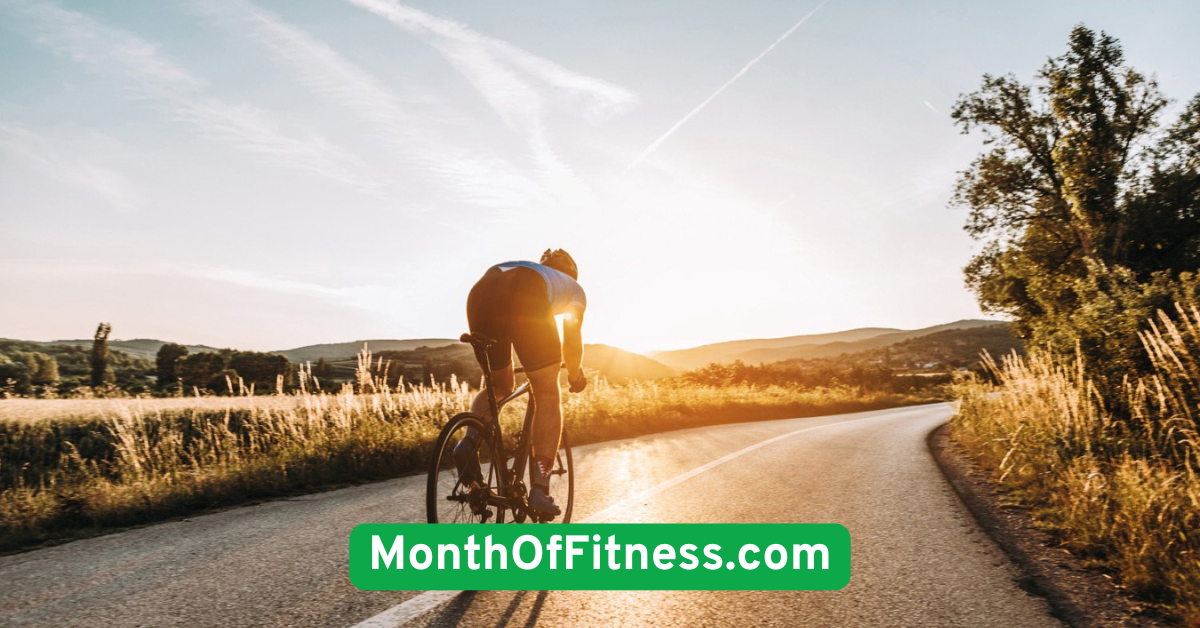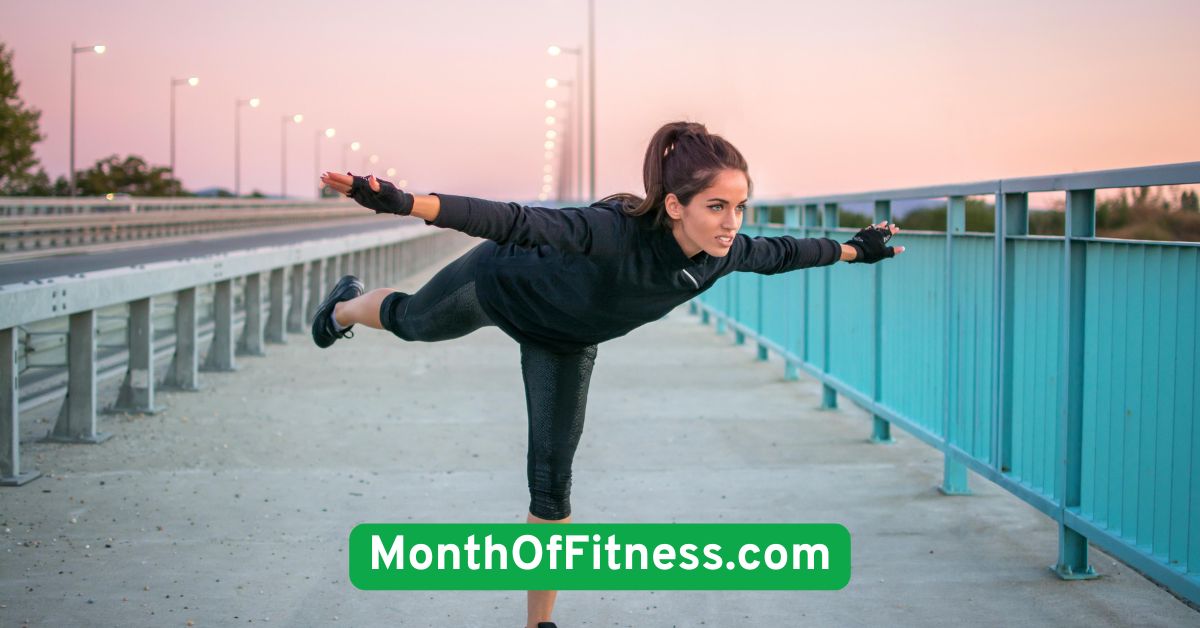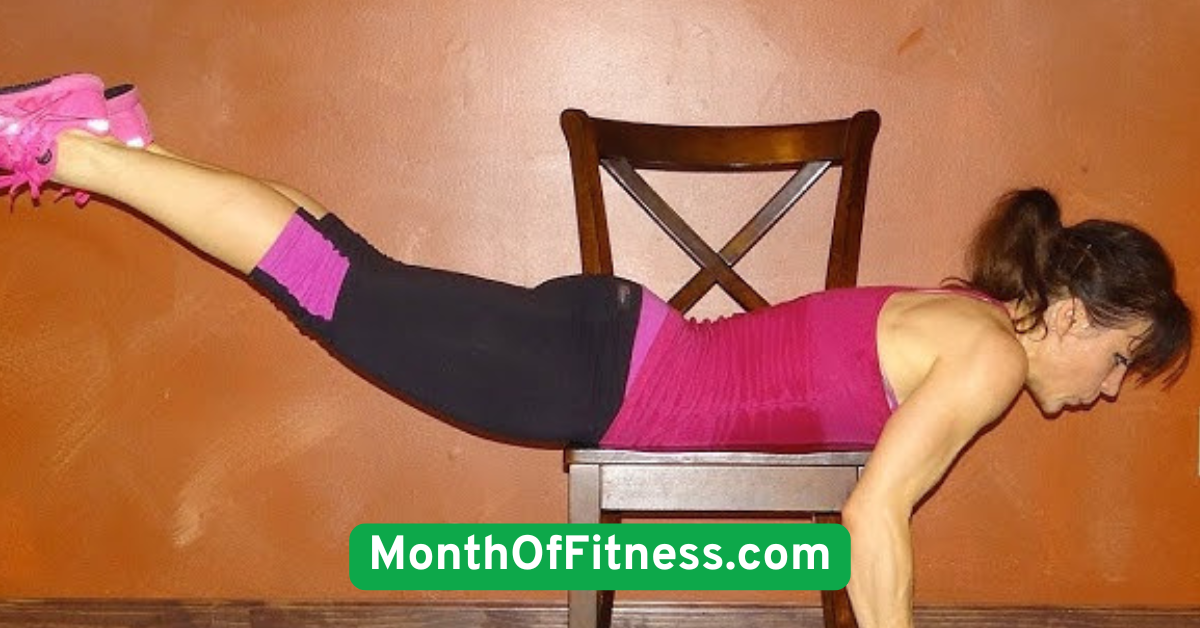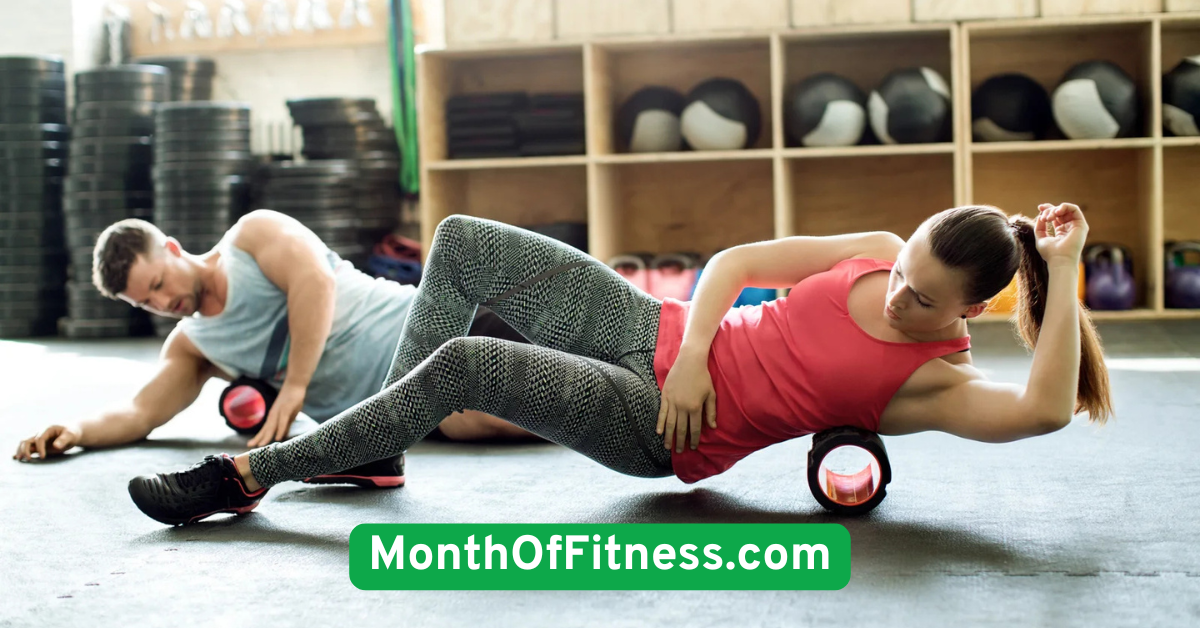30-Day Fitness Challenge Life-Changing to Build Healthy Habits in 2025
Have you ever wondered if just 30 days could transform your health and fitness? Science says yes! Research shows it takes roughly 21 to 30 days to build a new habit. That means committing to a fitness challenge for a month could set the foundation for lifelong healthy habits. The beauty of this 30-day fitness challenge is that it’s designed not just to push your body, but also to inspire your mind, making fitness feel fun, manageable, and sustainable.This isn’t about extreme workouts or quick fixes. Instead, it’s about daily, balanced movement that fits your lifestyle and grows your confidence. You’ll discover workouts targeting strength, cardio, and flexibility, along with mindset and nutrition tips. By the end, you won’t just be fitter—you’ll be empowered to keep going strong. Ready to start your life-changing journey? Let’s dive into each day of this challenge!
Day 1: Jumpstart Your Journey with a 10-Minute Full Body Warm-Up
Starting off strong means warming up smart. A 10-minute full body warm-up preps your muscles, wakes up your nervous system, and reduces injury risk. Simple movements like arm circles, leg swings, bodyweight squats, and brisk walking get your blood flowing and set a positive tone.The beauty of warming up is its accessibility—no equipment needed, no gym required. Plus, it primes your mind to focus, signaling the start of your fitness time. Begin slowly, listen to your body, and enjoy the feeling of moving intentionally. This day is about setting the habit of preparation and mindfulness, critical for consistent progress.

Day 2: Boost Your Heart Rate with 20 Minutes of Cardio Intervals
Cardio is a powerhouse for burning calories and strengthening your heart. Today’s focus is on intervals—short bursts of higher intensity followed by recovery. For instance, jog or march fast for 30 seconds, then walk for 1 minute, repeating this cycle for 20 minutes.Intervals are great because they maximize fat burning and improve endurance in less time than steady-state cardio. You can do this anywhere: your living room, park, or stairs. Remember, it’s not about perfection but effort. Even if you need to modify or slow down, you’re building momentum and conditioning your body for more.

Day 3: Strength Building Basics — Bodyweight Squats and Lunges
Strength training builds lean muscle, which increases metabolism and supports fat loss. Today’s workout centers on two foundational moves: squats and lunges. These target your legs, glutes, and core, essential for balance and daily function.Start with bodyweight squats, keeping your chest up and knees tracking over toes. Then, alternate lunges forward, focusing on control and stability. Aim for 2 sets of 10-15 reps each. Proper form matters to avoid injury and maximize benefits, so move deliberately. Adding strength early boosts confidence and prepares you for more challenging workouts.

Day 4: Active Recovery with Gentle Stretching and Mobility Work
Rest doesn’t mean stop. Active recovery days help your muscles repair and reduce soreness. Today, focus on gentle stretching and mobility exercises like cat-cow stretches, shoulder rolls, and hip openers.This improves flexibility, range of motion, and circulation—key elements for long-term fitness success. Take your time with each stretch, breathing deeply. Enjoy this slower pace as a chance to listen to your body and celebrate the work you’ve done so far.

Day 5: Core Strength — Planks and Bicycle Crunches
A strong core supports posture, balance, and daily activities. Start with planks—hold your body in a straight line from head to heels, engaging your abs. Beginners can modify by resting on knees. Then, move to bicycle crunches to target obliques and lower abs.Perform 3 sets of 20-30 seconds for planks and 15-20 reps for crunches. Focus on quality over quantity, avoiding neck strain. Building core strength reduces back pain and improves overall stability, making all movements safer and more efficient.

Day 6: Cardio Fun — Dance or Jump Rope for 15-20 Minutes
Exercise doesn’t have to be boring! Today, pick a fun cardio activity you enjoy. Dance to your favorite playlist or jump rope if you have one. Both raise your heart rate and burn calories while boosting mood.Fun workouts increase adherence because you associate movement with joy, not punishment. Keep intensity moderate, and let yourself smile. Remember, consistency is easier when exercise feels like a treat.

Day 7: Lower Body Strength Focus — Glute Bridges and Step-Ups
Glutes are often overlooked but crucial for posture and power. Glute bridges strengthen the backside while step-ups improve leg strength and balance. For bridges, lie on your back with knees bent, lifting hips towards the ceiling. Step-ups require a sturdy platform—step up and down alternating legs.
Do 3 sets of 15 reps each. These moves enhance your athleticism and prevent injuries from prolonged sitting. Incorporating targeted strength moves builds a balanced body.

Day 8: Mindset and Motivation — Setting Realistic Goals
Physical fitness starts in the mind. Today, reflect on why you started this challenge. Write down your goals—focus on what you want to gain, not just lose. Realistic, measurable goals (like “complete all workouts this week”) help maintain motivation.
Consider barriers and plan how to overcome them. Remind yourself that progress is not linear; setbacks are part of growth. This mental clarity empowers you to keep moving forward with confidence.

Day 9: Upper Body Strength — Push-Ups and Shoulder Taps
Strengthen your chest, shoulders, and arms with push-ups. Start on knees or walls if full push-ups feel tough. Shoulder taps challenge your core and stability; from plank, lift one hand to tap opposite shoulder.3 sets of 10-15 reps each builds upper body endurance, improving posture and everyday strength. Maintaining proper form protects joints and enhances results.

Day 10: Endurance Boost — Brisk Walking or Jogging for 30 Minutes
Today’s challenge is longer-duration cardio. Whether walking briskly or jogging, keep a steady pace that raises your breathing but still allows conversation. This builds cardiovascular endurance and burns calories.Make it social by inviting a friend or listen to an engaging podcast. Enjoy the fresh air and rhythm of your steps. Consistent endurance workouts support heart health and mood.

Day 11: Balance and Stability — Single-Leg Stands and Heel-to-Toe Walks
Balance often goes unnoticed but is crucial for injury prevention and functional movement. Practice standing on one leg for 30 seconds, then switch. Heel-to-toe walking in a straight line improves coordination.These simple exercises enhance your proprioception and control. Improved balance translates to better performance in other workouts and daily life.

Day 12: Total Body Strength — Burpees and Dumbbell Rows (or Water Bottles)
Burpees are a full-body calorie burner and strength builder. If dumbbells aren’t available, use filled water bottles for rows to strengthen your upper back. Aim for 3 sets of 10-12 reps.These moves elevate your heart rate and build muscle, combining cardio and strength efficiently. Focus on controlled movement for safety.

Day 13: Flexibility Focus — Yoga Flow for 20 Minutes
Incorporate a gentle yoga flow focusing on stretching hips, hamstrings, back, and shoulders. Yoga promotes flexibility, reduces stress, and enhances recovery.Use online videos or apps if you’re new. Pay attention to breathing and ease into poses, fostering mind-body connection.

Day 14: HIIT Challenge — 15-Minute High-Intensity Circuit
Combine jumping jacks, mountain climbers, squat jumps, and push-ups in 30-second bursts with 15-second rests. Repeat the circuit 3-4 times.HIIT accelerates fat burn and improves cardiovascular fitness. Modify intensity as needed but keep effort high.

Day 15: Nutrition Basics — Hydration and Balanced Meals
Exercise success depends on nutrition. Focus today on drinking enough water—aim for 8 glasses or more depending on activity level.Include balanced meals with lean proteins, whole grains, and colorful vegetables. Avoid processed foods and excessive sugars for sustained energy.

Day 16: Lower Body Burn — Wall Sits and Calf Raises
Wall sits build endurance in quads, while calf raises strengthen lower legs. Hold wall sit for 30-45 seconds; perform 3 sets of 15-20 calf raises.These exercises improve muscular stamina, supporting daily activities and workouts.

Day 17: Active Rest — Leisurely Walk or Gentle Stretching
Use this day for gentle movement to keep blood flowing. A slow walk or light stretches helps recovery and mental reset.Rest is as important as effort for long-term fitness gains.

Day 18: Core Challenge — Russian Twists and Leg Raises
Russian twists engage obliques; leg raises target lower abs. Do 3 sets of 20 twists and 15 leg raises.Strong core stabilizes your body, preventing injury and enhancing performance.

Day 19: Cardio Endurance — Swimming or Cycling for 30 Minutes
If accessible, swimming or cycling offers low-impact cardio, great for joints. Keep steady pace, enjoying rhythmic breathing.Alternate with walking or jogging for variety.

Day 20: Strength Mix — Dumbbell Deadlifts and Chest Press (or Bodyweight)
If you have weights, include deadlifts and chest presses. Otherwise, do modified bodyweight exercises focusing on the same muscle groups.Build strength carefully, focusing on form.

Day 21: Mindful Movement — Tai Chi or Gentle Stretching
Practice slow, mindful movements through Tai Chi or gentle stretching. This reduces stress and increases body awareness.Incorporate deep breathing to relax your mind.

Day 22: Full Body Blast — Circuit Training with Bodyweight Exercises
Combine squats, push-ups, planks, lunges, and jumping jacks in a circuit, 30 seconds each with 15 seconds rest, 3 rounds.This workout boosts strength and cardio together.

Day 23: Focus on Posture — Chest Openers and Back Extensions
Stretch chest muscles and strengthen upper back to improve posture. Include doorway stretches and prone back extensions.Good posture reduces pain and enhances confidence.

Day 24: Fat-Burning Intervals — Sprint/Walk Cycles
Alternate 20-second sprints with 40-second walks for 15-20 minutes. Adjust sprint speed to your level.Intervals maximize calorie burn and build speed.

Day 25: Balance & Core — Stability Ball or Cushion Exercises
Use a stability ball or cushion for seated balance exercises and core activation. If unavailable, do planks and bird dogs.Challenge your balance to improve coordination.

Day 26: Lower Body Strength — Bulgarian Split Squats and Hamstring Curls
Use a bench or chair for split squats; hamstring curls can be done lying down with leg lifts.These strengthen legs and prevent injury.

Day 27: Relax and Recover — Foam Rolling and Deep Stretching
Use a foam roller or massage ball to release tight muscles. Follow with deep stretches to improve flexibility.Recovery days keep you moving forward pain-free.

Day 28: Upper Body Endurance — Tricep Dips and Arm Circles
Use a chair for dips; arm circles improve shoulder mobility. Perform 3 sets of 15 reps.Strengthen arms to support daily tasks and workouts.

Day 29: Active Challenge — Hike, Long Walk, or Group Class
Try a new activity or extend your usual walk. Change keeps fitness fun and engaging.Social exercise boosts motivation.

Day 30: Celebrate Your Success and Plan Your Next Steps
Congratulations! Reflect on your journey and progress. Set new goals—whether continuing this challenge or trying new fitness activities.
Celebrate with something healthy and enjoyable. Your commitment over 30 days is a powerful foundation for lasting healthy habits.

Conclusion
This 30-day fitness challenge isn’t just a workout plan; it’s a life-changing opportunity to build healthy habits that stick. By combining varied workouts with mindset and nutrition focus, you’ve laid the foundation for sustainable wellness. Remember, fitness is a journey—not a destination.Stay kind to yourself, celebrate every step, and keep moving forward. The habits you build today will shape your tomorrow. So, lace up, stay motivated, and enjoy the vibrant health and happiness that come with your commitment!





